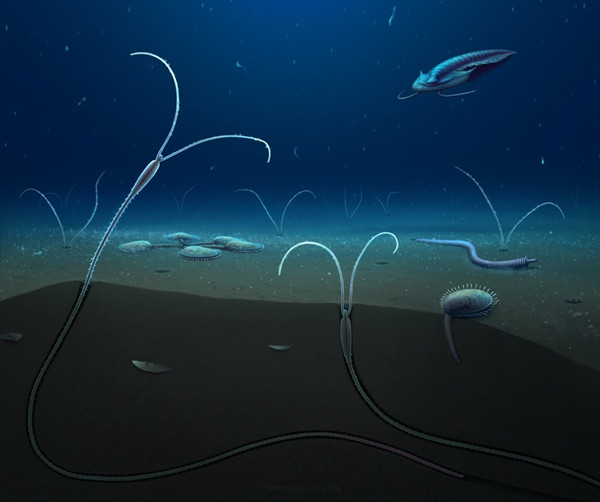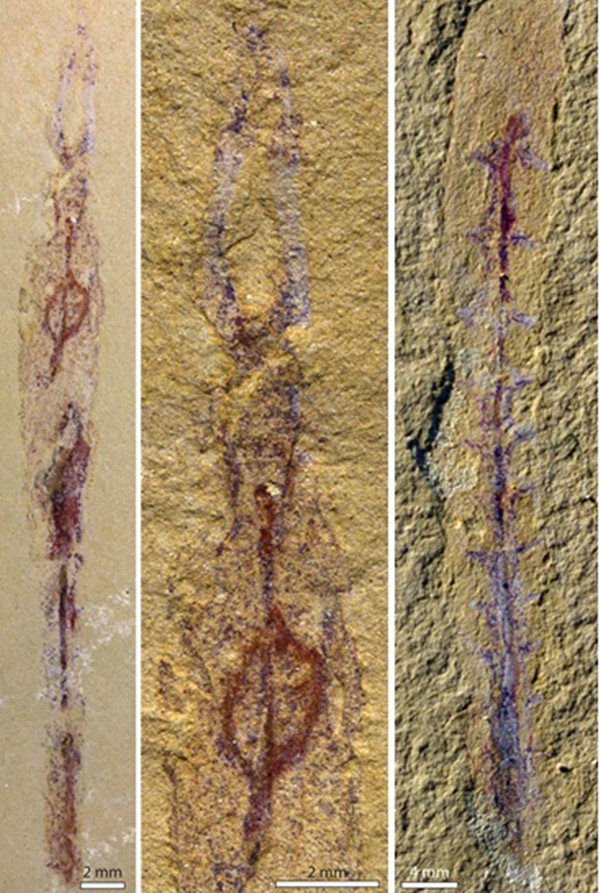YNU team discovers fossil of ancient annelid

An artists' image of the newly discovered Dannychaeta tucolus. [Photo/ynu.edu.cn]
To scientists, the annelid is widely known as an ancient body-segmented worm. It lived in various terrestrial and marine ecosystems and played an important role as common earthworms, leeches and sandworms -- making it an important category of species.
The polychaete is the one with the longest evolutionary examples in the history of annelids and the study of early polychaetes has always been one of the research hotspot areas that point to the origin and early evolution of annelids.
On June 11, leading international multidisciplinary science journal Nature published the latest research results of a team from the Yunnan Key Laboratory for Palaeobiology, showing that a new polychaete was discovered in Southwest China's Yunnan province, coming from about 514 million years ago.
Researchers said that they named the animal Dannychaeta tucolus, which they found to be preserved within delicate, dwelling tubes that were originally organic. The head has a well-defined spade-shaped prostomium with elongated ventrolateral palps. The body has a wide, stout thorax and elongated abdomen with biramous parapodia with parapodial lamellae.
They said this character combination is shared with extant Magelonidae and phylogenetic analyses of recovered Dannychaeta within Palaeoannelida.
Experts said that to their knowledge, the Dannychaeta is the oldest polychaete that unambiguously belongs to crown annelids, providing a constraint on the tempo of annelid evolution and revealing unrecognized ecological and morphological diversity in ancient annelids.
Researchers Hou Xianguang and Ma Xiaoya from the Yunnan Key Laboratory for Palaeobiology at Yunnan University are the co-corresponding authors of the paper. Doctoral candidate Chen Hong and Dr Luke Parry from Oxford University are the co-first authors and researcher Zhai Dayou at YNU and Dr Jakob Vinther from the University of Bristol are the co-authors.
Check here to learn more about the paper: https://www.nature.com/articles/s41586-020-2384-8

Pictures of the early Cambrian polychaete annelid Dannychaeta tucolus. [Photo provided by Chen Hong/ynu.edu.cn]




